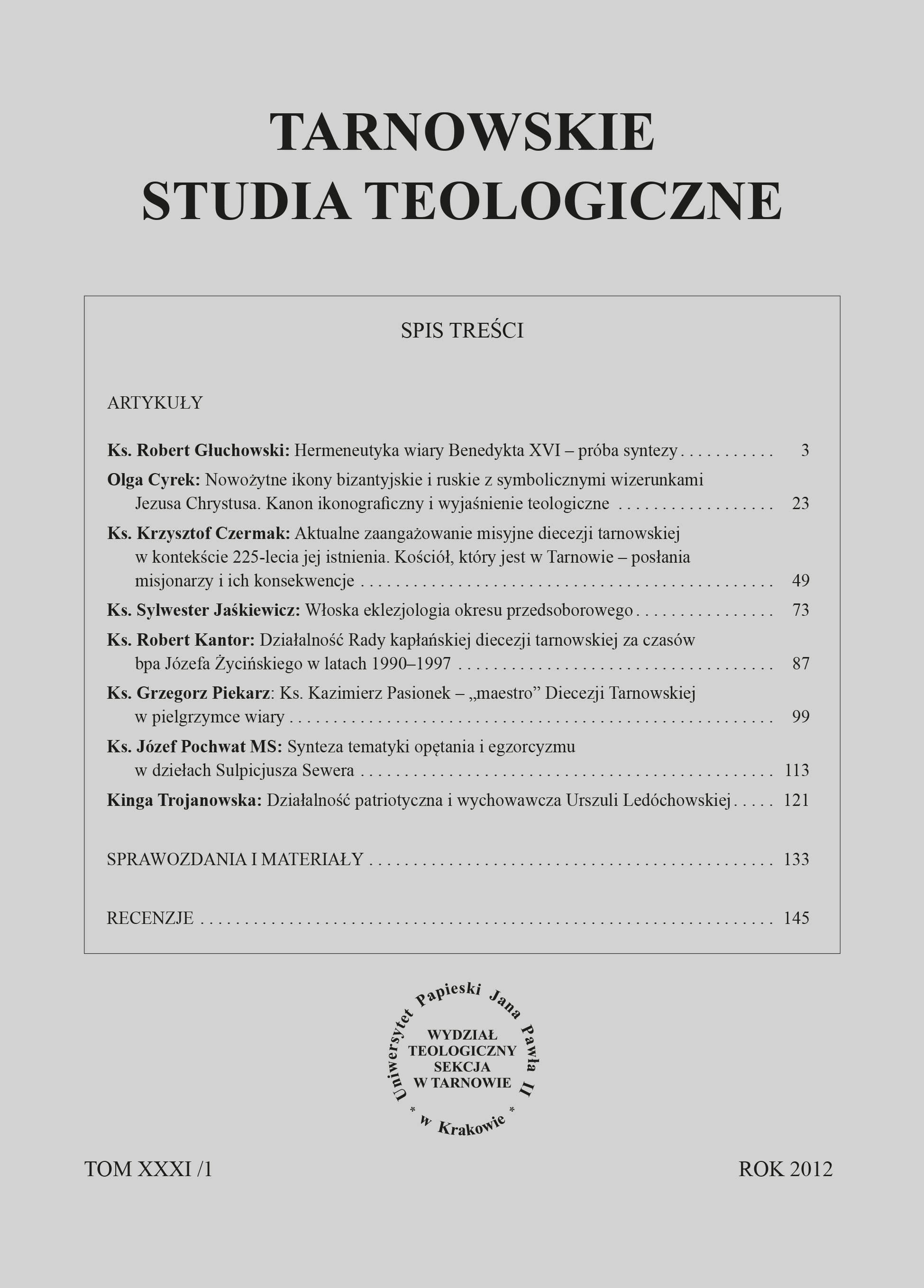Nowożytne ikony bizantyjskie i ruskie z symbolicznymi wizerunkami Jezusa Chrystusa. Kanon ikonograficzny i wyjaśnienie teologiczne
DOI:
https://doi.org/10.15633/tts.278Słowa kluczowe:
symbolizm, ikonografia, sztuka bizantyjska, chrystologia, teologiaAbstrakt
The article explains the iconographic scheme of symbolic representations of Christ, which were present in the Russian and Byzantine art. In comparison to the first characters used on the early these icons have theological content. They represent the whole process of salvation for mankind, and many of them associated with the liturgy. For example, images of Christ as a “Watchful eye” or as the Lamb of God refer to the rites performed during the initial part of the Liturgy. Also important are the images of Christ in the performances of the whole Trinity. The type of the Old Testament Trinity He is shown as one of the three angels, and New Testament Trinity in the form of a man in robes of blue and red. Distinct type of representation is the Son of God in the form of an angel. There is here such topics as: Christ the Holy Silence, Christ Crucified Seraph and Sophia-Wisdom of God.Pobrania
Opublikowane
2012-09-09
Numer
Dział
Artykuły
Licencja
Prawa autorskie (c) 2012 Olga Cyrek

Utwór dostępny jest na licencji Creative Commons Uznanie autorstwa 4.0 Międzynarodowe.
Autorzy publikujący w czasopiśmie udzielają jego wydawcy zgody o następującej treści:
- Autor zachowuje autorskie prawa majątkowe do utworu, a jednocześnie udziela wydawcy czasopisma zgody na jego pierwszą publikację w wersji drukowanej i wersji online na licencji Creative Commons Uznanie autorstwa 4.0 Międzynarodowe oraz zgody na wykonywanie opracowań, w tym przekładów.
- Autor ma możliwość udzielania zgody niewyłącznej na opublikowanie utworu w wersji, która ukazała się w czasopiśmie (np. zamieszczenia go w repozytorium instytucjonalnym lub opublikowania w książce), wraz z informacją o jego pierwszej publikacji w czasopiśmie.
- Autor może umieścić swój utwór online (np. w repozytorium instytucjonalnym lub na swojej stronie internetowej) jeszcze przed zgłoszeniem utworu do czasopisma.

